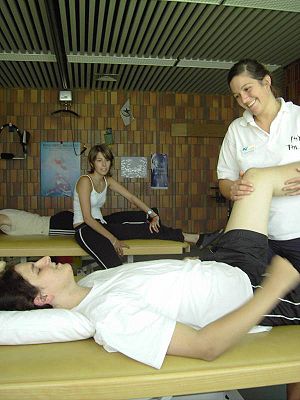
Reporting in ”Spinal Cord”, Aug 30,2011 doi: 10.1038/sc.2011.95, Drs.Ferreira VM de Vargas etal of the Department of Orthopedics and Traumatology, Faculty of Medical Sciences, UNICAMP, State University of Campinas, Campinas, Brazil.
have completed a study to analyze the relationships between functional tests, arm strength and root mean square of surface electromyography (EMG).The setting was Sao Paulo, Brazil and the methods used were: Twenty-four individuals with chronic tetraplegia . Upper extremity motor score (UEMS), functional independence measure (FIM) motor score, spinal cord independence measure III and capabilities of upper extremity (CUE) were performed. Muscle strength of the right elbow flexors-extensors was assessed using dynamometry and manual muscle test (MMT) and EMG of right biceps and triceps brachii were performed. Spearman’s rank correlation coefficients and Mann-Whitney’s U-test were used.The results were that functional tests and UEMS correlated strongly among them. UEMS highly correlated with triceps dynamometry and EMG. The dynamometry showed a very high correlation with MMT on the extensor group and a moderate correlation with flexor group. Triceps EMG showed moderate correlation with FIM and CUE. High correlations between triceps EMG and elbow extensors dynamometry and MMT were observed. A significant better performance on functional tests was observed on lower ASIA motor levels. The low-tetraplegia group showed a significant higher score on triceps EMG and dynamometry.Conclusion:Arm strength and EMG seem to be related to functional capabilities and independence in chronic tetraplegia.Spinal Cord advance online publication, 30 August 2011; doi:10.1038/sc.2011.95.
The 3DTutor and its sister devices (HandTutor, ArmTutor, LegTutor) have been effective in rehabilitation therapy for spinal cord injury victims. The 3DTutor specifically is a wireless motion feedback device that can be positioned on discreet joints of the head, trunk, upper and lower extremities. This allows for evaluation and treatment of the joint of choice, The 3DTutor can be used alone or in conjunction with the other Tutors to exercise additional interjoint coordination movements. Already functioning in leading U.S. and foreign hospitals the Tutor system can be used by children and adults and, through the use of telerehabilitation, in the home as well.
No comments:
Post a Comment